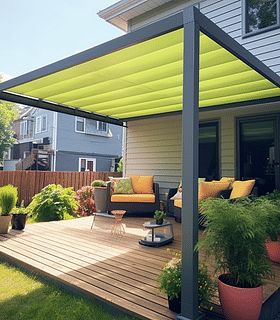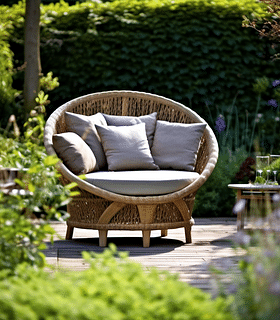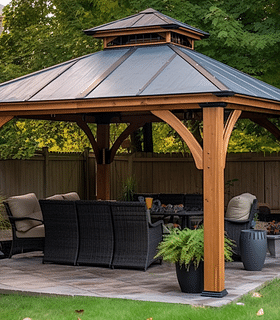Gazebo vs Pergola: What is the difference?
What sets a gazebo apart from a pergola? Uncover the key differences in our comprehensive guide. Get all the details you need to make an informed decision.
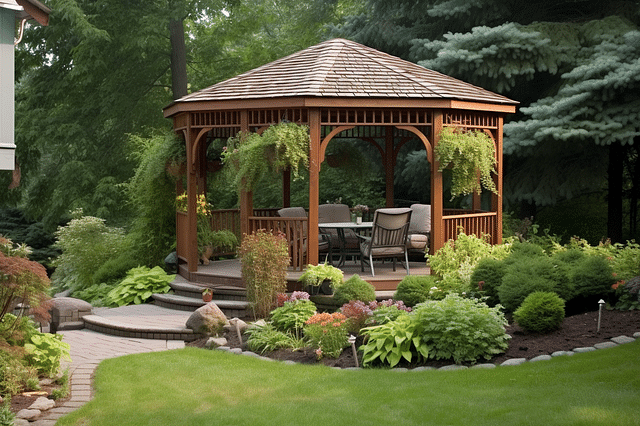
Have you ever dreamed of creating a charming outdoor space where you can relax and enjoy the beauty of nature? A place where you can sip your morning coffee or host a delightful gathering with friends and family? If so, you've probably come across the terms "gazebo" and "pergola" in your search for the perfect addition to your outdoor oasis. But what exactly are the differences between these two structures? And which one is the best fit for your needs?
In this blog post, we're going to unveil the key differences between gazebos and pergolas. We'll dive into their unique features, styles, and benefits, helping you make an informed decision. Whether you're looking to create a cozy retreat or an elegant entertainment area, we've got you covered. So let's get started and explore the fascinating world of gazebos and pergolas!
Understanding Gazebos and Pergolas
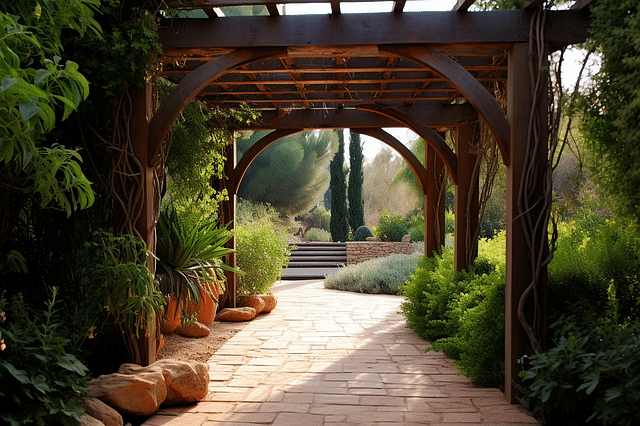
Gazebos and pergolas are two popular outdoor structures that can enhance the beauty and functionality of any backyard or garden. While they have some similarities, they also have distinct differences in terms of structure, design, and purpose. In this section, we will delve into the world of gazebos and pergolas, exploring what they are, their main purposes, how they differ in structure and design, the commonly used materials, and the factors to consider when choosing between the two.
What is a gazebo?
A gazebo is a freestanding outdoor structure that is typically round, octagonal, or rectangular in shape. It is often open-sided, with a roof and sometimes with screens or curtains to provide shade and protection from insects. Gazebos can be made of various materials such as wood, metal, or vinyl. They are usually elevated from the ground and can be placed in different areas of the yard, such as near a pool or in a garden.
Gazebos serve as a charming outdoor gathering space, providing shade, shelter, and a cozy atmosphere for relaxation, entertaining guests, or enjoying meals. They can be adorned with comfortable seating, tables, and decorative elements to create a welcoming and picturesque setting in your backyard.
What is a pergola?
Unlike gazebos, pergolas are open-air structures that consist of vertical posts and a series of crossbeams on top. They usually have a rectangular or square shape and do not have a solid roof. Instead, they feature an open lattice or slatted roof design that allows filtered sunlight to pass through. Pergolas can be attached to a house or stand alone in the yard, and they can be made of materials such as wood, metal, or vinyl.
Pergolas are primarily used to create a defined outdoor space that blends seamlessly with the natural surroundings. They provide partial shade, a sense of enclosure, and an opportunity to grow climbing plants or vines along the structure. Pergolas offer a perfect spot for outdoor dining, lounging, or creating an outdoor living room atmosphere.
What are the main purposes of gazebos and pergolas?
Both gazebos and pergolas serve as outdoor living spaces, but they have different main purposes. Gazebos are often used as intimate gathering spaces, ideal for relaxation, hosting small parties or events, and enjoying meals. Their solid roof and optional screens provide protection from the sun, rain, and bugs, making them suitable for year-round use.
Pergolas, on the other hand, are more about defining and enhancing outdoor spaces. They create a designated area for various activities, such as dining, lounging, or even as a walkway or entrance to another part of the garden. Pergolas provide an element of shade and privacy while allowing for the beauty of the surrounding landscape to shine through.
Which materials are commonly used for gazebos and pergolas?
Gazebos and pergolas can be constructed using various materials, each offering its own unique advantages and visual appeal.
Wood is a popular choice for both gazebos and pergolas due to its natural beauty and versatility. Cedar and redwood are commonly used for their durability, resistance to decay, and insect repellent properties. They can be left unfinished for a rustic look or stained/painted to match the surrounding landscape.
Metal gazebos and pergolas, typically made of aluminum or steel, offer durability and a sleek, modern aesthetic. They are lightweight yet sturdy, making them easy to assemble and maintain. Metal structures are often powder-coated to resist rust and corrosion.
Vinyl gazebos and pergolas are low-maintenance options that require minimal upkeep. Made from PVC materials, they are durable, resistant to rotting, and available in various styles and colors. Vinyl structures can offer the look of wood without the need for regular painting or staining.
Which factors should be considered when deciding between a gazebo and a pergola?
When choosing between a gazebo and a pergola, several factors should be considered to ensure you make the right decision for your outdoor space.
Purpose: Think about how you plan to use the structure. If you want a fully enclosed space for year-round use, a gazebo might be the best option. If you prefer an open-air structure that defines a specific area while allowing sunlight and nature to be present, a pergola might be more suitable.
Size and Space: Consider the size of your yard or outdoor space and how much room you have available. Gazebos are generally larger and require more space, while pergolas offer flexibility and can be customized to fit small or large areas.
Style and Aesthetics: Think about the overall look and feel you want to achieve in your backyard. Both gazebos and pergolas come in various styles and designs, so choose the one that complements your home's architecture and personal taste.
Budget: Set a budget and consider the costs associated with materials, construction, and maintenance. Gazebos tend to be more expensive due to their fully enclosed structure, while pergolas can be more budget-friendly.
Climate and Location: Take into account the climate in your area and the location where you plan to install the structure. Consider factors such as wind, sun exposure, and the potential impact of weather conditions on the longevity and usability of the gazebo or pergola.
By carefully considering these factors, you can make an informed decision and choose the right outdoor structure that will enhance your backyard and create an inviting space for relaxation and enjoyment.
Aesthetic Differences
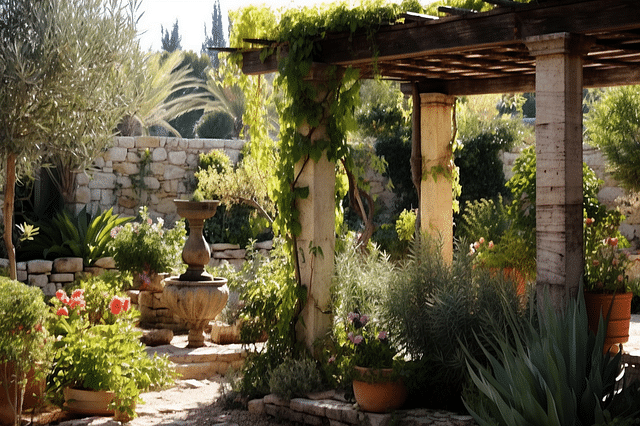
When it comes to gazebos and pergolas, there are some noticeable differences in terms of appearance. In this section, we will explore these aesthetic differences and how they can complement different architectural styles and personal tastes.
How do gazebos and pergolas differ in terms of appearance?
Gazebos and pergolas have distinct design elements that set them apart in terms of appearance. Gazebos are freestanding structures with a solid or closed roof and open sides. They often feature a hexagonal, octagonal, or circular shape, which gives them a unique charm. Pergolas, on the other hand, are typically rectangular or square in shape and consist of vertical posts supporting an open lattice roof. This open roof design allows for filtered sunlight and a more airy feel.
Which architectural styles are commonly associated with gazebos and pergolas?
Gazebos and pergolas can enhance the architectural style of your outdoor space. Different styles are commonly associated with these structures, allowing you to choose one that complements your existing aesthetic. Traditional and Victorian-style gazebos are known for their intricate details, ornate spindles, and decorative elements. These styles often feature elaborate trim work that adds a touch of elegance to your garden. Pergolas, on the other hand, are often associated with more modern, contemporary, or Mediterranean architectural styles. Their clean lines and minimalist design make them a popular choice for a modern backyard or patio.
Can gazebos and pergolas be customized to suit different tastes and preferences?
Absolutely! Both gazebos and pergolas can be customized to suit different tastes and preferences. You can choose from a variety of materials such as wood, vinyl, or metal, each offering unique characteristics and aesthetics. Furthermore, you can select different finishes, colors, and decorative elements to personalize your structure. Whether you prefer a rustic wooden gazebo or a sleek white vinyl pergola, the customization options are endless. This allows you to create a structure that not only complements your outdoor space but also reflects your personal style and taste.
Functional Differences
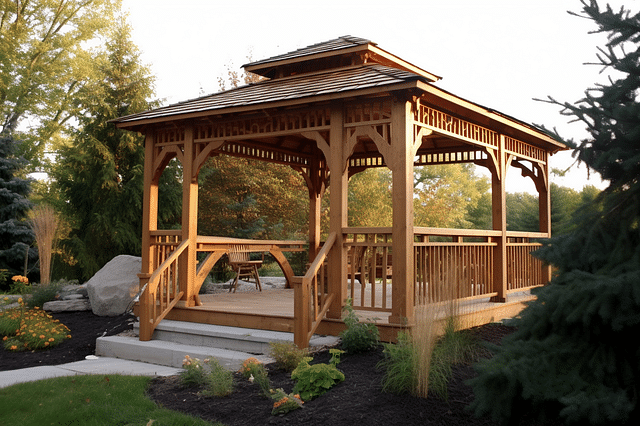
When it comes to comparing gazebos and pergolas, one of the main aspects to consider is their functionality. While both structures provide shade and a place to relax outdoors, there are some key differences in how they are designed and used.
How do gazebos and pergolas differ in terms of functionality?
Gazebos are typically fully enclosed structures, featuring walls and a solid roof. This makes them ideal for creating a sheltered space that provides protection from the elements. With the ability to install windows and doors, gazebos can be transformed into cozy outdoor rooms that can be used year-round. Because of their enclosed design, gazebos are often used for activities such as dining, entertaining guests, hosting parties, or even as a place for a hot tub or spa.
On the other hand, pergolas are open-air structures that consist of posts and a grid-like roof with beams and rafters. Unlike gazebos, pergolas do not have walls, giving them a more airy and open feel. Pergolas are perfect for creating an outdoor space that allows both sunlight and fresh air to come through. Their design makes them a popular choice for creating a shaded area in gardens or patios, while still allowing for a cool breeze to pass through. Pergolas are often used as a decorative element in outdoor spaces, providing a framework for climbing plants such as vines or roses.
Which activities are typically enjoyed in gazebos and pergolas?
The different designs of gazebos and pergolas lend themselves to different activities. Gazebos, with their enclosed structure, are well-suited for activities that require a bit more privacy or protection from the elements. Many people use gazebos as outdoor dining areas, where they can enjoy a meal with family and friends without being bothered by bugs or exposed to inclement weather. Gazebos also make a great space for entertaining guests, providing a sheltered environment for socializing or hosting parties. Additionally, the enclosed design of gazebos makes them a perfect spot for installing a hot tub or spa, creating a secluded oasis for relaxation and recreation.
Pergolas, with their open-air design, are often used for activities that embrace nature and the outdoor environment. Their open-roof structure invites sunlight, making them an ideal spot for enjoying the warmth and brightness of the outdoors. Pergolas are commonly used as gathering spaces in gardens or patios, providing a shaded area for outdoor seating or a place to set up a cozy outdoor living room. They also serve as a picturesque backdrop for outdoor weddings, creating a romantic and natural setting. With their open design, pergolas allow for easy access and movement, making them versatile for a range of activities, from casual gatherings to yoga or meditation sessions.
Are there any specific features or accessories that are unique to gazebos or pergolas?
Both gazebos and pergolas offer a range of features and accessories that can enhance their functionality and aesthetics. Some specific features that are unique to gazebos include the ability to have windows and doors, which can provide added protection from insects and weather elements. Additionally, many gazebos come with built-in benches or seating areas, making them ready-made spaces for relaxation or dining. Gazebos can also be equipped with lighting fixtures, allowing for nighttime use or creating a cozy ambiance.
Pergolas, on the other hand, can be customized with various accessories to suit individual preferences and needs. One popular accessory for pergolas is a retractable canopy or shade sail, which can provide additional shade and protection from the sun. This allows for more control over the amount of sunlight that filters through the pergola. Another unique feature of pergolas is the option to add hanging plants or vines to the structure, creating a natural and lush atmosphere. This adds a touch of beauty and serenity to the space, enhancing the overall appeal of the pergola.
In summary, while both gazebos and pergolas provide outdoor shelter and a place to enjoy the outdoors, their functionality differs significantly. Gazebos offer a fully enclosed space that provides protection from the elements and privacy, making them perfect for activities such as dining, entertaining, or installing a hot tub. Pergolas, with their open design, create an airy and shaded space that embraces nature, making them ideal for gathering and enjoying the outdoors. Each structure has its own unique features and accessories that can enhance their functionality and make them a perfect addition to any outdoor space.
Installation and Maintenance
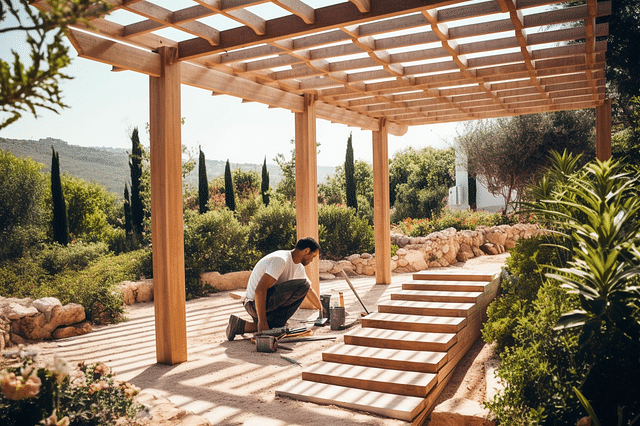
When it comes to adding a gazebo or pergola to your outdoor space, installation and maintenance are important factors to consider. In this section, we'll explore how difficult it is to install these structures, the general maintenance requirements, and whether gazebos or pergolas are more prone to damage or deterioration over time.
How difficult is it to install a gazebo or pergola?
Installing a gazebo or pergola can vary in difficulty depending on several factors, such as the size, design, and whether you choose a pre-made kit or opt for a custom build. Generally, pre-made kits come with detailed instructions and all the necessary components, making it easier for even novice DIYers to install. These kits typically include pre-cut and pre-drilled materials, eliminating the need for complex measurements and precise cuts.
However, if you decide to go for a custom build, the installation process may require more expertise and time. Custom builds often involve more intricate measurements, cutting, and assembly. It's recommended to hire a professional contractor or carpenter for complex custom builds to ensure proper installation and structural stability.
What are the general maintenance requirements for gazebos and pergolas?
Gazebos and pergolas are outdoor structures that are exposed to the elements, so regular maintenance is essential to keep them in good condition. Here are some general maintenance requirements to keep in mind:
Cleaning: Regularly clean your gazebo or pergola to remove dirt, debris, and stains. Use a mild detergent and water solution, and rinse it thoroughly to avoid any residue buildup.
Painting or Staining: Depending on the material of your gazebo or pergola, you may need to periodically paint or stain it to protect it from the sun, moisture, and other weather conditions. Follow the manufacturer's recommendations for the specific material.
Inspecting for Damage: Regularly inspect your gazebo or pergola for any signs of damage, such as loose screws, cracked wood, or worn-out parts. Address these issues promptly to prevent further damage and ensure the structural integrity of the structure.
Tending to Vegetation: If your gazebo or pergola has climbing plants or vines, regularly trim and maintain them to prevent them from causing any damage to the structure.
Are gazebos or pergolas more prone to damage or deterioration over time?
Both gazebos and pergolas are designed to withstand outdoor conditions, but like any outdoor structure, they can experience wear and tear over time. The extent of damage or deterioration can depend on various factors, including the quality of materials, construction, and regular maintenance.
In general, gazebos tend to have more complex designs and are often larger structures compared to pergolas. This complexity can make gazebos more susceptible to damage, such as leaks, rotting, or warping, especially if they have multiple layers or intricate roofing systems. However, proper construction, regular maintenance, and high-quality materials can significantly extend the lifespan of a gazebo.
On the other hand, pergolas typically have a simpler design with an open roof structure supported by posts. As a result, they may be less prone to damage or deterioration. However, the exposed nature of pergolas makes them susceptible to sun damage, including fading or weakening of materials over time.
Ultimately, both gazebos and pergolas can stand the test of time with proper installation, regular maintenance, and protective measures.
Cost Considerations
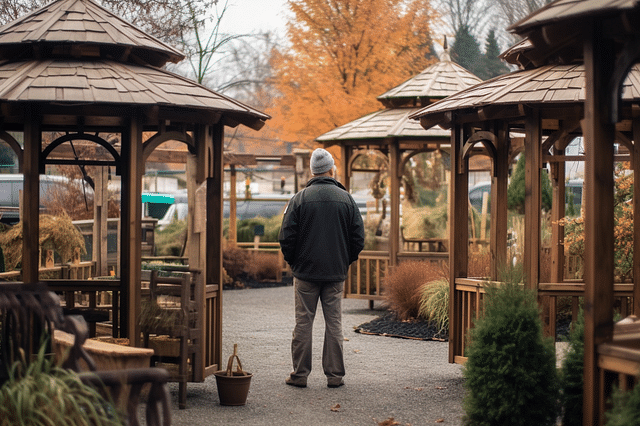
When it comes to considering the cost of owning a gazebo or pergola, there are a few factors to keep in mind. Understanding the typical price range for these structures, as well as any additional costs that may arise, can help you budget and plan accordingly. Additionally, certain factors can influence the overall cost of a gazebo or pergola. In this section, we'll explore these cost considerations in more detail.
What is the typical price range for gazebos and pergolas?
The cost of gazebos and pergolas can vary widely depending on factors such as size, material, design complexity, and additional features. On average, a basic gazebo can range from $500 to $5000, while a more elaborate and customized option can cost anywhere from $5000 to $15000 or more. Similarly, a simple pergola can start at around $1000 and go up to $5000, whereas a larger or more intricate design can be priced at $5000 to $10000 or higher.
Are there any additional costs associated with owning a gazebo or pergola?
In addition to the initial purchase price, it's important to consider any additional costs that may be associated with owning a gazebo or pergola. These can include installation fees, site preparation costs, and maintenance expenses. Hiring a professional to install the structure can range from a few hundred dollars to several thousand dollars, depending on the size and complexity of the project. Site preparation, such as leveling the ground or pouring a concrete foundation, may also incur extra costs. Lastly, ongoing maintenance, such as staining, sealing, and repairing any damages, should be factored into the overall cost of ownership.
Which factors can influence the overall cost of a gazebo or pergola?
There are several factors that can influence the overall cost of a gazebo or pergola. The material used is a significant factor, as different materials come with different price points. For example, wood is typically more expensive than vinyl or metal. The size and complexity of the structure can also impact the cost, as larger and more intricate designs require more materials and labor. Additionally, any additional features or customizations, such as built-in seating, lighting, or screens, will add to the overall cost. Lastly, geographical location may affect pricing, as labor and material costs can vary from one area to another.
Climate and Environmental Factors

When considering adding a gazebo or pergola to your outdoor space, it's essential to understand how these structures will fare in different climates and environmental conditions. In this section, we'll address common questions about the suitability of gazebos and pergolas in various climates, their wind resistance and durability, as well as their ability to provide shade and protection from the elements.
Are gazebos and pergolas suitable for all types of climates?
Gazebos and pergolas are designed to withstand different climates, but their suitability may vary depending on specific weather conditions. Generally, these structures are suitable for most climates, including mild, temperate, and hot climates. However, they may require additional measures to withstand extremely harsh weather conditions, such as heavy snowfall or strong winds.
It's important to consider the material and construction quality of the gazebo or pergola when assessing its suitability for a particular climate. For instance, metal or aluminum structures are more resistant to extreme weather conditions, while wood structures may require regular maintenance and treatment to protect them from moisture, rot, and insects.
How do gazebos and pergolas fare in terms of wind resistance and durability?
Gazebos and pergolas can vary in their wind resistance and durability depending on their design, material, and construction. Generally, well-built structures with sturdy frames and high-quality materials will be more wind-resistant and durable.
Metal gazebos and pergolas, such as those made from steel or aluminum, tend to offer better wind resistance compared to their wooden counterparts. These materials are known for their strength and can withstand strong gusts of wind. However, it's important to anchor these structures securely to the ground to prevent them from toppling over during storms or high winds.
Wooden gazebos and pergolas can also provide good durability but may require regular maintenance, such as staining, sealing, and occasional repairs to maintain their structural integrity. Choosing weather-resistant wood, such as cedar or redwood, can enhance their durability and resistance to moisture, rot, and insect damage.
Do gazebos or pergolas provide better shade or protection from the elements?
Both gazebos and pergolas offer shade and protection from the elements, but the extent of coverage may vary.
Gazebos, with their solid roofs, provide better coverage and protection from the sun, rain, and other weather elements. They offer a fully enclosed space that can be furnished and utilized for various activities, making them ideal for year-round use.
On the other hand, pergolas feature an open, lattice-style roof that provides partial shade and allows some sunlight to filter through. While they offer less protection from direct sunlight and rainfall, pergolas create a beautiful outdoor space with a more airy and open feel. You can enhance the shade capability of a pergola by adding retractable canopies or growing climbing plants like vines or flowers on the structure.
The choice between a gazebo and a pergola depends on your personal preferences, the level of shade and protection you require, and the overall aesthetic you want to achieve in your outdoor space.
Conclusion
When it comes to choosing between a gazebo and a pergola, there are a few factors to consider. Both options offer their own unique advantages and can enhance the beauty and functionality of your outdoor space. So, which one is better suited for your needs?
Which option is better suited for my needs: a gazebo or pergola?
The answer to this question largely depends on your specific needs and preferences. If you're looking for a structure that provides a fully enclosed space, offers protection from the elements, and can be used for multiple purposes such as dining, entertaining, or relaxing, then a gazebo might be the better choice for you. Gazebos typically have a solid roof and walls, which provide shade, privacy, and protection from wind, rain, and insects. They can serve as an outdoor living room, creating a cozy and sheltered space for you and your guests to enjoy.
On the other hand, if you prefer a more open and airy structure that adds elegance and charm to your outdoor area, a pergola might be the way to go. Pergolas have an open-roof design with vertical posts and crossbeams, creating a shaded area that allows for plenty of natural light and airflow. They are perfect for creating a defined outdoor space, adding beauty and structure to your garden, or providing support for climbing plants. Pergolas are great for those who want to create a cozy and intimate atmosphere while still enjoying the beauty of the outdoors.
Ultimately, the decision between a gazebo and a pergola boils down to your personal preferences, your intended use for the structure, and the overall aesthetic you want to achieve in your outdoor space.
What are the final considerations to keep in mind when choosing between a gazebo and a pergola?
Before making your final decision, there are a few additional considerations to keep in mind. First and foremost, you'll need to consider the size and layout of your outdoor space. Measure the area where you plan to install the structure to ensure that it will fit comfortably without overwhelming the space. Additionally, think about the purpose of the structure and how you plan to use it. Are you looking for a space to entertain large groups or a cozy spot for quiet relaxation? This will help guide you towards the option that best suits your needs.
Budget is another important factor to consider. Gazebos are typically more expensive than pergolas due to their enclosed design and additional materials required. Keep in mind that maintenance and upkeep costs should also be factored into your decision. Gazebos may require more frequent maintenance due to their roof and walls, while pergolas are generally easier to maintain.
Finally, think about the overall style and design of your outdoor space. Consider the existing architecture of your home and the overall aesthetic you want to achieve. Both gazebos and pergolas come in a variety of styles, materials, and finishes to complement different design preferences.
By evaluating these final considerations, you can confidently choose between a gazebo and a pergola that suits your needs, enhances your outdoor space, and provides you with many enjoyable years of use.
Trending products
Shop outdoor accessoriesFrequently asked questions
- What is a gazebo and what is a pergola?
- A gazebo is a freestanding outdoor structure with a solid roof and open sides, while a pergola is an outdoor structure with an open roof and supporting columns.
- What is the main difference between a gazebo and a pergola?
- The main difference between a gazebo and a pergola is the roof. A gazebo has a solid roof, providing more shelter and protection from the elements, while a pergola has an open roof, allowing for more sunlight and airflow.
- Can a gazebo and a pergola be used interchangeably?
- While a gazebo and a pergola can both enhance your outdoor space, they serve slightly different purposes. A gazebo is ideal for creating a covered outdoor seating area or sheltered garden space, while a pergola is great for defining an outdoor living area or supporting climbing plants.
- Which one is better for providing shade, a gazebo or a pergola?
- If you're looking for maximum shade, a gazebo with its solid roof is the better option. Pergolas, on the other hand, provide partial shade with their open roof design, allowing sunlight to filter through.
- Can a gazebo or a pergola be customized?
- Both gazebos and pergolas can be customized to suit your style and needs. You can choose different materials, sizes, and finishes to create a personalized outdoor structure that complements your space.
- Are gazebos and pergolas easy to install?
- The ease of installation depends on the specific model and your level of DIY skills. Some gazebos and pergolas come in pre-fabricated kits, making it easier to assemble, while others may require professional installation.
- Which one is more suitable for outdoor entertaining, a gazebo or a pergola?
- Both gazebos and pergolas can be great for outdoor entertaining, but the choice depends on your preferences. A gazebo with its solid roof can provide more enclosed space for dining or small gatherings, while a pergola offers an open-air atmosphere and is perfect for hosting larger parties.
- How durable are gazebos and pergolas?
- The durability of gazebos and pergolas depends on the materials used. High-quality wood or metal gazebos and pergolas can be long-lasting and withstand various weather conditions if properly maintained.
- Can gazebos and pergolas add value to my property?
- Yes, adding a gazebo or a pergola to your property can increase its value by enhancing the outdoor living space and creating an appealing feature. It can also make your property more attractive to potential buyers.
- Can I use a gazebo or a pergola year-round?
- With proper maintenance and care, you can enjoy your gazebo or pergola year-round. However, it's important to consider the climate in your area and make any necessary adjustments to ensure their durability in all seasons.
Are you looking for more ideas?
Have a look at these other guides about improving your garden and patio to create your dream outdoor space!
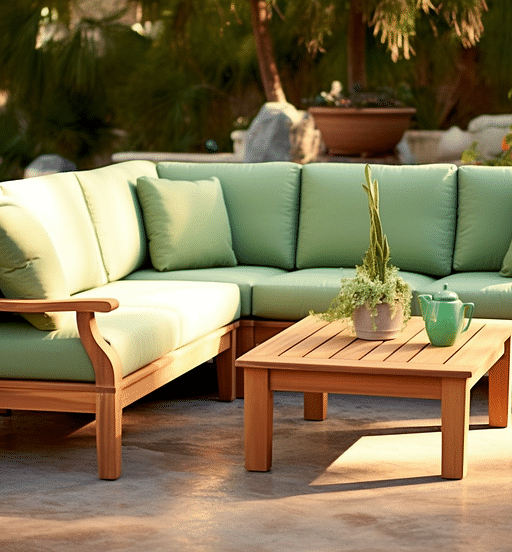
Are you looking for more ideas?
-
- Role
- Does a fence add value to a home?
- Description
- Discover the added value of having a fence for your home. Find out how a fence can increase your property's worth in our latest blog post!
-
- Role
- How can I create privacy in my backyard without sacrificing style?
- Description
- Achieve privacy in your backyard with creative and stylish solutions. This guide offers elegant ideas that ensure seclusion while enhancing the aesthetic appeal of your outdoor space.
-
- Role
- What is the most efficient way to heat an outdoor entertainment area?
- Description
- Maximize the warmth and enjoyment of your outdoor entertainment area with efficient heating solutions. Find out how to keep your space cozy with smart, energy-efficient options.
-
- Role
- How can I incorporate a water feature into my garden without overwhelming the space?
- Description
- Discover how to seamlessly integrate a water feature into your garden without overpowering it. This guide provides insight on selecting the right size, style, and placement for a harmonious addition to your outdoor space.

